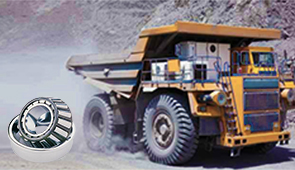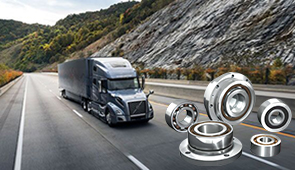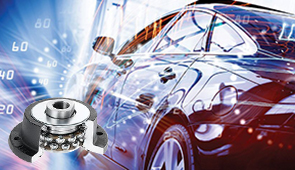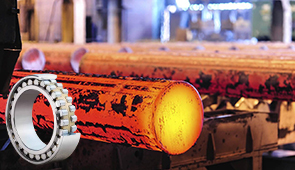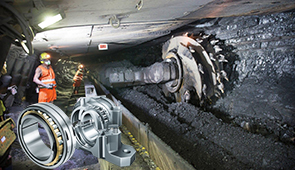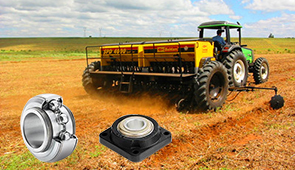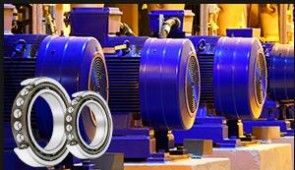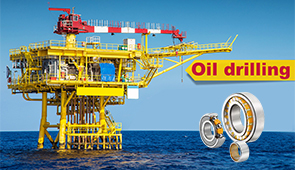Types of Cam Followers: Understanding Cam and Follower Mechanisms
Understanding the intricate dynamics of cam and follower mechanisms is crucial for industries that demand precision in motion control and machinery design. Cam followers, though seemingly simple components, play a pivotal role in converting rotary motion into linear motion with remarkable accuracy. These mechanical elements are engineered to endure varied loads, speeds, and operational conditions, making them indispensable in applications ranging from automotive engines to automated manufacturing systems. This article will explore the different types of cam followers, their working principles, and the specific use cases they cater to across industries. Whether you are an engineer, a machinery enthusiast, or simply curious about mechanical systems, this guide is designed to provide a detailed and authoritative understanding of cam followers and their importance in modern engineering.
Types of Cam Followers
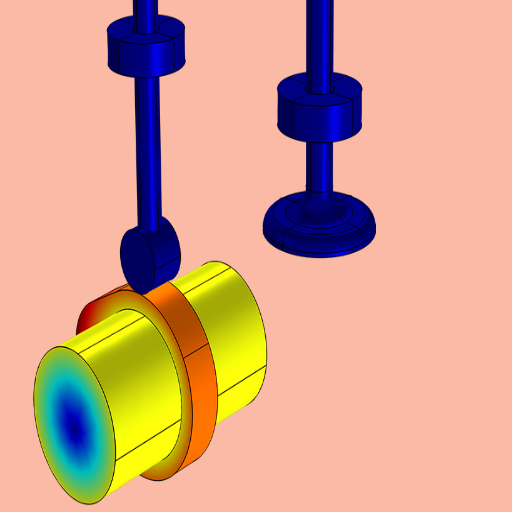
Roller Cam Followers
Roller cam followers are a type of cam follower that utilizes cylindrical or needle-shaped rollers to provide an interface of reduced friction during motion. Such a mechanism provides smooth interfacing of the cam and follower, thus lessening wear and extending life span of components. The rolling element ordinarily rides on a shaft or a pin, in some sealed arrangement that would prevent intrusion of dirt or contaminants.
One advantage roller cam followers have is the ability to affect high-load applications while providing efficiency. They are usually made from strong materials such as hardened steel, so they can endure and resist stresses and wear through long hours of use. Roller cam followers provide bearing support for rotation, thus considerably lowering friction compared to sliding resistance encountered by some other types of followers.
Roller cam followers find their application in many industries where accurate motion control is required: automotive, robotics, and heavy machinery. For instance, these cam followers are commonly installed in automated conveyor systems, packaging machines, and engine timing mechanisms. As a means of keeping the subsystems lightly coupled yet firmly attached, roller cam followers enable engineering constructions of mechanical systems requiring precise mechanical motion.
Needle Roller Followers
These are a unique kind of cam follower fitted with needle rollers as the rolling bodies. They are highly capable of bearing heavy loads for their size, thus very suitable for uses with storage capacity and weight limitations. Due to being compact themselves, these components come in handy in different machines and assemblies where accuracy and reliability are non-negotiable.
Among the major benefits of needle roller followers is that they can bear really high radial loads in setups where space constraints are in effect. This feature arises from their precise alignment of needle rollers, which give a bigger contact area than what conventional rolling elements would. Superior load carrying and lesser friction raise operational efficiency and usefulness. These are found in use mostly in automotive gearboxes, camshaft systems, and in handling material in all sorts of equipment, ensuring methodical and controlled movement when faced with differing loads.
Moreover, needle roller followers can come in various styles-from sealed ones to unsealed ones that suit divergent operational environments. The sealed ones have the capability of keeping the contaminants out, thereby rendering them suitable for harsh working conditions. If installed and lubricated properly, needle roller followers require little maintenance, which goes towards making their long-term cost beneficial. Considered on these grounds, determining factors that make them indispensable in applications that need precision, durability, and space-saving solutions.
Flat Followers
Flat followers are the only type of cam followers with a truly flat surface in contact with the cam profile. This yields a uniform distribution of forces and thus reduces surface stresses in operation. They are commonly used in applications that require a very precise straight motion, such as automotive engines or heavy industry machinery. The design is quite simple, making it an economical and easy-to-manufacture cam follower.
Flat followers offer very good surface contact with the cam surface, thus minimizing slipping or deviated motion. This makes them suitable where accurate timing and motion control are required. However, the absence of any rolling elements means these followers tend to develop more friction than roller followers. Therefore, lubrication is critical to reduce wear, in applications where the motion and loads are fast and heavy.
Flat followers tend to be made from hardened steel and similar wear-resistant materials to withstand force and wear for a prolonged time. They are ideal for compact systems that demand restricting the height or weight of the follower since their design is least affected by space constraints on performance. Further, they find their uses in applications where simplicity and durability are options over minimizing friction, rendering them quite versatile.
Construction Materials of Cam Followers
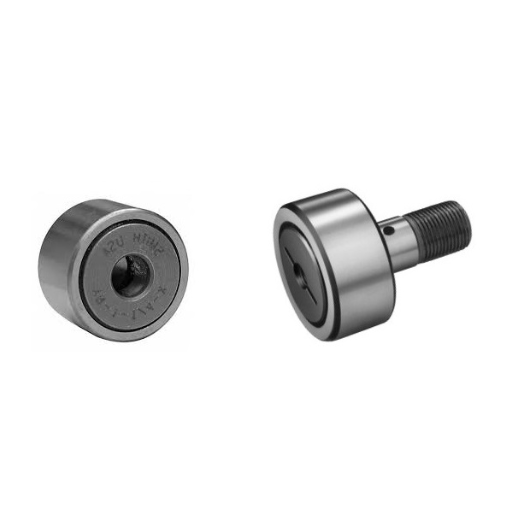
Common Materials Used in Cam Followers
Cam followers are commonly manufactured with the highest quality material in order to ensure durability, longevity, and performance under varying operational stresses. The outer race usually uses either through or case-hardened alloy steels-that is, 52100 bearing steel, or tool steels such as AISI 8620-with the highest possible wear resistance and fatigue strength. These materials would ensure that the outer race would endure repeated rolling and sliding contact without surface degradation.
The rolling elements have conventionally used high-carbon chrome steel for its hardness and ability to sustain very high loads. Other materials may include stainless steel when corrosion resistance is an important matter for consideration, mainly in an application environment exposed to moisture, chemicals, or extreme temperatures.
The shaft or stud part of stud-type cam followers is mainly steel that is heat-treated to provide a tensile strength threshold as well as to resist deflection under heavy load. Surface coatings may be applied over critical surfaces to improve their durability and operational efficiency. These coatings may include black oxide or a special anti-friction wear coating.
These material specifications are designed and applied to stand up to the most demanding industrial applications, ensuring that the cam followers perform reliably across a vast variety of mechanical systems and installations, such as conveyors, automated machinery, and automotive components.
Impact of Material Choice on Performance
Material selection in the design of a cam follower plays an essential role in the overall performance, durability, and efficiency. Wear resistance, the load-bearing capacity, and the operational life of cam followers are almost directly influenced by a few material properties. The material influences can be studied in detail by looking at five major factors:
- Hardness and Wear Resistance: Harder materials, like those of high-carbon steel or alloy steel, resist surface wear better as loads or repeated contacts increase during operation. It is widely known that materials having a Rockwell hardness of at least HRC 60 will decrease surface pitting and wear up to 50% when compared to softer materials.
- Corrosion Resistance: Stainless steel and some specially coated materials get protection against oxidation and chemical corrosion, making them fit for places that may provide a humid or chemically reactive environment. Industry test data also show that stainless steel helps increase component life to the extent of 30% under corrosive conditions, as opposed to uncoated steel.
- Load-Bearing Capacity: Materials with higher tensile strength (tool steels or case-hardened steels) increase the bearing capacity of cam followers. AISI 52100 steel cam followers, for example, present a tensile strength of 300,000 psi and can bear extremely heavy industrial application loads with no deformation.
- Heat Resistance: Materials excellent in thermal resistance are required for applications involving high operating temperatures. Materials such as chromium-molybdenum steels and ceramics will maintain their structural integrity and mechanical properties at operating temperatures in excess of 500°F; testing further exhibits that performance levels of these materials stay 30% longer than that of others under thermal stress.
- Friction and Lubrication Compatibility: Materials selected because of their low coefficients of friction or because of their good compatibility with lubricants, such as nitrided steels, result in reduced energy loss and reduced operational wear. A combination of the proper choice of materials and appropriate lubrication reduces friction at the working surface by as much as 40 percent, thereby increasing efficiency and reducing maintenance.
On analyzing these factors, it becomes evident that the choice of material is critical to making cam followers high-performing in all applications across various mechanical and industrial settings.
Corrosion Resistance and Durability
Corrosion resistance is a major factor affecting cam follower means and performance, especially when conditions involving moisture, chemicals, or extremes of temperature are usual. Cam followers are often manufactured with stainless steel or coated with corrosion-resistant coatings such as chromium or nickel. These coatings prevent reactions with oxidation and thus significantly enhance the component’s life. For example, stainless steel types like 316 could resist very aggressive agents like chlorides, thus being suitable for marine or heavily industrialized environments.
The other major attribute pertains to durability, as cam followers undergo repeated loading and contact stresses over long-term periods. With an implementation of heat treatments on specific surfaces and a certain degree of hardness in design, these cam followers can resist deformation and wear, making them highly reliable while especially under demanding loads. Also, controlling the preload and finishing techniques-smooth grinding it more durable by eliminating surface irregularities, leading to fatigue offenses or stress failures. Optimally designed cam followers also ensure smooth load distribution over the surface, thus minimizing local stress concentration.
Advanced material science and manufacturing capabilities have allowed cam follower manufacturers to meet the dual demands of corrosion resistance and high durability. Thin-film coatings such as titanium nitride (TiN) or diamond-like carbon coatings are examples of such materials being used increasingly to resist wear and to provide low friction. Field data have shown that wear rates for coated cam followers are nearly 30 percent less than those of uncoated cam followers tested under the same operational conditions. Such advancements ensure that cam followers find suitable use even in environments that would quickly deteriorate traditional materials, thus attaining an optimal compromise between costs and performance.
Working Principle of Cam Followers
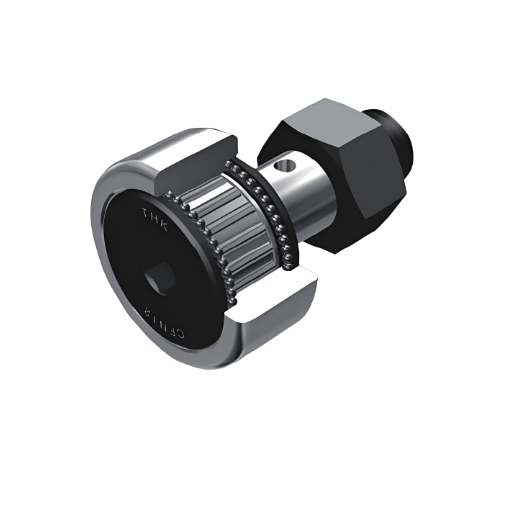
How Cam and Follower Mechanisms Operate
The cam and follower mechanism utilizes the conversion of the rotating motion of the cam into linear or oscillating motion of the follower. This can be done with the use of the cam’s geometry since the created movement pattern of the follower depends upon the rotation of the cam while it is in contact with the cam’s face. It is a very precise system in which a specific cam profile is designed to produce a particular output motion depending on the intended use.
To locate the cam, it is usually mounted on a rotating shaft and, in its design, among other things, can be eccentric, heart-shaped, or snail-shaped, depending on the motion it is to impart. Upon rotation, the cam profile comes into direct or indirect contact with the follower, which interprets this response as a guided one. The follower mechanism offers either flat-faced, roller or knife-edged types based on further function. To improve efficiency, friction between the cam and follower is kept low by either the choice of materials or some form of coating.
Finally, the working efficiency of a cam and follower system depends on the correct calibration, durable materials, and the accurate design of the cam profile. This setup finds extensive use in industrial applications such as internal combustion engines where valve timing is controlled or in automated machines with repetitive motions. In order to provide a smooth conversion of input motion to desired output motion, every component needs to work in perfect harmony, so that optimum design efficiency is attained.
Role of Bearings in Cam Followers
The structure and function of cam follower systems rely on bearings to a great extent. Bearings reduce friction while carrying loads and help with the smooth functioning of a mechanism with rotary or linear motion. Properly integrated bearings help to give greater operational life and reliability to the cam follower assembly, especially at high speeds under high loads. The five greatest aspects of bearings in cam followers are described below with detailed explanations:
- Friction Reduction: A bearing tries to minimize friction between the camshaft and follower to make sure that there is less wear and tear on the parts. Hence, it leads to smoother motion, better efficiency, and less loss of energy during execution.
- Load Support: Bearings of a cam follower are well capable of resisting both radial and axial loads under varied loading conditions so that the cam follower carries the application without distress.
- Heat Dissipation: The bearings help count heat dissipation from internal friction and allow the mechanical contact to take place smoothly. This prevents the overheating of the bearing and also the cam follower system.
- Durability Enhancements: By preventing excessive load concentration and mechanical stresses on cam follower systems, bearings are, therefore, able to promote the durability of such systems by protecting their vital components from premature failure.
- Accurate Motion Control: Bearings make sure that the transmission of motion within the cam follower assembly is achieved with utmost precision and thereby retain constant accuracy during operation. This is of importance in CNC machine and robotic applications where accuracy matters.
The ability of cam followers to perform robustly in diverse industries is attributed to such properties as combined with a range of bearing designs, such as needle roller bearings, cylindrical roller bearings, and thrust bearings. Selection of the correct bearing type will require the engineer to consider, amongst others, load-bearing capacity, operational speed, and environmental conditions.
Comparison of Functionality Across Different Types
Cam followers possess several functions that depend on their particular configuration; the main types comprise roller, spherical, knife-edge, flat-faced, oscillating, reciprocating, radial, and offset, each appropriate for a variety of applications and motion demands.
|
Type |
Key Feature |
Motion |
Application |
Durability |
Friction |
Load |
|---|---|---|---|---|---|---|
|
Roller |
Smooth contact |
Reciprocating |
Heavy-duty |
High |
Low |
High |
|
Spherical |
Wide contact |
Reciprocating |
Precision |
Moderate |
Moderate |
Moderate |
|
Knife-edge |
Sharp contact |
Reciprocating |
Rare use |
Low |
High |
Low |
|
Flat-faced |
Flat contact |
Reciprocating |
Space-limited |
Moderate |
Moderate |
Moderate |
|
Oscillating |
Vibrating motion |
Oscillating |
Automation |
High |
Low |
High |
|
Reciprocating |
Linear motion |
Reciprocating |
Engines |
High |
Low |
High |
|
Radial |
Centered motion |
Linear |
General |
High |
Low |
High |
|
Offset |
Offset motion |
Linear |
Specific |
Moderate |
Moderate |
Moderate |
Applications of Cam Followers
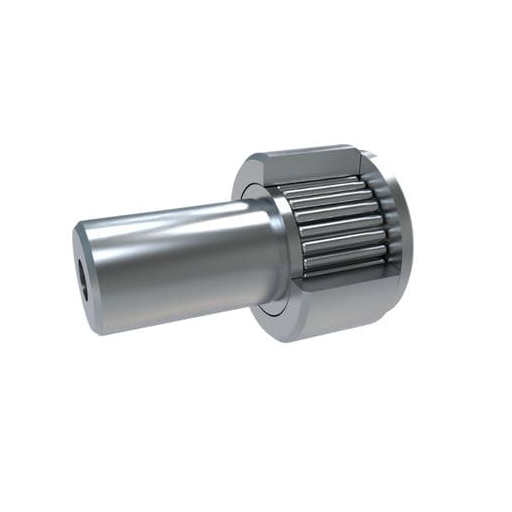
Automotive Industry Uses
Cam followers play a predominant role in different automotive applications owing to their ability to handle high loads, maintain motion with precision, and withstand harsh conditions. One of their main uses is in engine valve trains for assisting the camshaft rotation into linear motion for opening and closing intake and exhaust valves. This application requires utmost wear resistance and very accurate motion control, which they acquire through sophisticated materials and designs.
In suspension systems, cam followers exert an important effect in permitting smooth motion with controlled amplitude to guarantee stability and comfort for the vehicle. They can absorb very large impact forces, going on to work amicably without failure for very long. Another salient aspect of their application arises in manufacturing and assembly line-type robots assembling automotive components. High-precision cam followers achieve positioning and motion control refusing imprecision that needs to be an obstacle in the drive toward automation and efficiency.
By means of the integration of durable cam followers into vehicle and assembly applications, manufacturers win the reliability of their product and are very much constructing the performance and precision demanded by the automotive sector.
Manufacturing and Robotics Applications
Modern industrial workings need cam follower systems to articulate several high-precision tasks. Given below are five detailed applications spotlighting their role in retaining efficiency, precision, and longevity:
- Assembling Automotive Parts: Cam followers are instrumental in robotics operating assembly lines for the production and assembly of complicated automotive parts. These cam followers permit accurate motion control, ensuring proper alignment of the components while greatly reducing errors during production. It has been found that cam follower assembly systems can increase the efficiency of assembly by as much as 20%.
- Conveyor Systems: Commonly used in conveyor systems, cam followers provide great stabilization to the system and prevent wear and tear, ensuring further continuous operation in high-throughput environments. Material handling industries have witnessed an increase of 30% in equipment life after the application of cam followers.
- CNC Machining and Tooling: Acting as integral components, cam followers are used in CNC (Computer Numerical Control) machines to ensure linear and rotary motion with incomparable precision. Besides, a report states that tolerance as small as ±0.001 inches can be maintained by machining accuracy offered by cam followers.
- Automated Packaging Machinery: These systems, for pharmaceutical and consumer products, follow cam followers for a number of complicated motions: folding, sealing, labeling, etc. By lessening mechanical fatigue, cam followers consequently reduce downtime by 15% and boost reliability.
- Textile Bleaching Equipment: Textile machines like looms and spinning systems use cam followers for quick and repetitive motion. This implementation within the machinery smoothens operation, thus enabling manufacturers to increase productivity by 10%.
Making use of cam followers in these applications helps industries both in boosting production and enhance long-term system resilience, dictating its importance in advanced manufacturing and robotics.
Aerospace Industry Implementations
Cam follower systems in the aerospace sector find use in various high-precision equipment where performance depends on the operating environment. These are widely utilized in actuation mechanisms, control surfaces, and landing assemblies where high loads and uninterrupted wearability are imposed. For instance, within aircraft control systems, cam followers provide smooth yet reliable mechanical transmission of movements that require alignment perpendicular to the movement’s path and operational accuracy; in the landing gear retraction system, they support considerable load-bearing capacity while limiting wear from repeated cycles.
Recent advances in materials and manufacture-related techniques contribute extensively to the efficiency and reliability of cam followers used in aerospace applications. The manufacturing process allows producers to promote in-service flight conditions in the region of elevated thermal and mechanical stresses, offering the possibility of cam followers designed from heat-resistant alloys and implemented with novel lubrication systems. Using sophisticated simulation tools, engineers optimize the performance of these components that directly enhance their aircraft systems’ safety and performance.
Thus, cam-followers are a paradigm of what is required in aspiration technologies for technical precision and resilience, having been widely accepted in aerospace engineering.
Comparative Analysis of Cam Followers
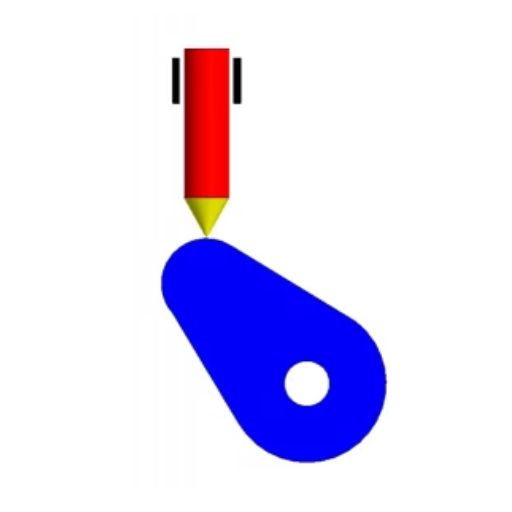
Durability and Maintenance Considerations
The main factors affecting cam follower durability are materials and surface treatments. High-quality alloys, such as stainless steel or chromium-plated materials, are often chosen owing to their greater resistance to wear and fatigue under cyclic loading. Superior surface treatments applied for hardening or wear resistance, such as heat treatment, nitriding, or the application of titanium-carbide coatings, have been designed especially with the thought of extending component life in high-stress environments.
Maintenance-wise, features searched for in conventional bearing cam musicians included sealing or pre-lubrication, thereby reducing downtime for operations and maintenance. Dirt, debris, or moisture contaminants will accelerate wear and impair the functionality of cam musicians; contaminated particles must be kept out. Moreover, some cam musicians feature advanced lubrication methods to sustain lubricant distribution to minimize friction and thermal breakdown over prolonged use.
Recent improvements in predictive maintenance methods now allow sensors embedded in cam followers to record real-time wear pattern monitoring, including temperature variations and vibration responses. This helps arrange maintenance work beforehand, thus decreasing the risk of sudden failure. Predictive maintenance is able to increase component life by as much as 30% and reduce costs simultaneously, demonstrating the evolution of material technology as well as intelligent maintenance methods in the durability and dependability of cam followers in various industrial applications.
Selecting the Right Cam Follower for Your Needs
Choosing the right cam follower for your application depends on a number of key considerations, starting with load capacity and equipment load requirements. It is important to choose a cam follower with a load capacity that will withstand operational forces without succumbing to premature wear or failure. Dynamic and static load ratings become most important when considering if a cam follower can withstand larger and continuous forces versus sudden impacts.
Depending on environmental conditions such as high or low temperature, contamination, or moisture, the materials, and the design of seals must be considered. For highly corrosive and moist environments, stainless steel cam followers are often favored due to their strong resistance to oxidation and rust.
Considering the motion the cam follower will undergo – linear, oscillating, or rotary – is of primal choice for its high possibility of limiting friction with needle or roller or with ball bearing cam followers under dynamic conditions and wearing of the cam followers. Also, consider lubrication considerations and potential gains from self-lubrication to enhance efficiency and maintenance intervals.
Finally, dimensions and mounting configurations, including heavy-duty stud type or yoke type, must precisely adhere to the mechanical design of the application concerned. A cam follower of selection based on your operational application requirement will guarantee sustained operational value and high performance over time.
Frequently Asked Questions (FAQ)
Q: What are the different types of cam followers?
A: The types of cam followers include knife-edge followers, flat-faced followers, cylindrical cam followers, and stud-type cam followers. Each type is designed to accommodate specific motion requirements based on the application of cam and follower systems.
Q: How does a cylindrical cam follower function?
A: A cylindrical cam follower operates with a cylindrical surface that allows for smooth contact with the cam. As the cam rotates, the follower moves in a manner that translates the rotational motion into reciprocating or oscillating motion, depending on the design of the cam and follower mechanism.
Q: What is the role of the profile of the cam in follower movement?
A: The profile of the cam is crucial as it defines the required motion of the follower. The shape or profile determines how the cam moves, influencing the follower’s reciprocation or oscillation to achieve the desired motion in mechanical engineering applications.
Q: Can you explain the concept of a translating cam?
A: A translating cam is designed to move the follower in a straight line, as opposed to a rotating motion. This type of cam is effective in applications where linear motion is needed, and it allows the follower to move parallel to the axis of the cam.
Q: What is a knife-edge follower, and what are its advantages?
A: A knife-edge follower is a type of cam follower that has a sharp edge that contacts the cam. Its design allows for precise motion transfer, making it suitable for applications requiring minimal misalignment. However, it may not be as durable as other types due to higher wear.
Q: How do cam follower bearings enhance performance?
A: Cam follower bearings offer reduced friction and improved load capacity, which enhances the performance of the cam and follower mechanism. These bearings are typically mounted on a shaft and help in maintaining alignment while facilitating smooth follower motion.
Q: What is the significance of the base circle in cam design?
A: The base circle is the smallest circle that can be drawn from the cam’s profile. It serves as a reference point in cam design, helping engineers determine the pressure angle and other critical parameters that affect the motion of the follower.
Q: What are oscillating followers, and where are they used?
A: Oscillating followers are designed to pivot around a fixed point, allowing for a back-and-forth motion. They are commonly used in applications such as the opening and closing of valves, where precise control of movement is essential.
Q: How does the shape of the cam impact follower performance?
A: The shape of the cam directly affects the cam movement and the resulting motion transferred to the follower. An irregular shape can create complex motion profiles, which may be beneficial or detrimental depending on the specific application requirements.
UCTH213-40J-300 with Setscrew(inch)
CNSORDERNO: Normal-duty(2)
TOGN: UCTH213-40J-300
SDI: B-R1/8
SD: 2 1/2
UCTH212-39J-300 with Setscrew(inch)
CNSORDERNO: Normal-duty(2)
TOGN: UCTH212-39J-300
SDI: B-R1/8
SD: 2 7/16
UCTH212-38J-300 with Setscrew(inch)
CNSORDERNO: Normal-duty(2)
TOGN: UCTH212-38J-300
SDI: B-R1/8
SD: 2 3/8
UCTH212-36J-300 with Setscrew(inch)
CNSORDERNO: Normal-duty(2)
TOGN: UCTH212-36J-300
SDI: B-R1/8
SD: 2 1/4
UCTH211-35J-300 with Setscrew(inch)
CNSORDERNO: Normal-duty(2)
TOGN: UCTH211-35J-300
SDI: B-R1/8
SD: 2 3/16
UCTH211-34J-300 with Setscrew(inch)
CNSORDERNO: Normal-duty(2)
TOGN: UCTH211-34J-300
SDI: B-R1/8
SD: 2 1/8









